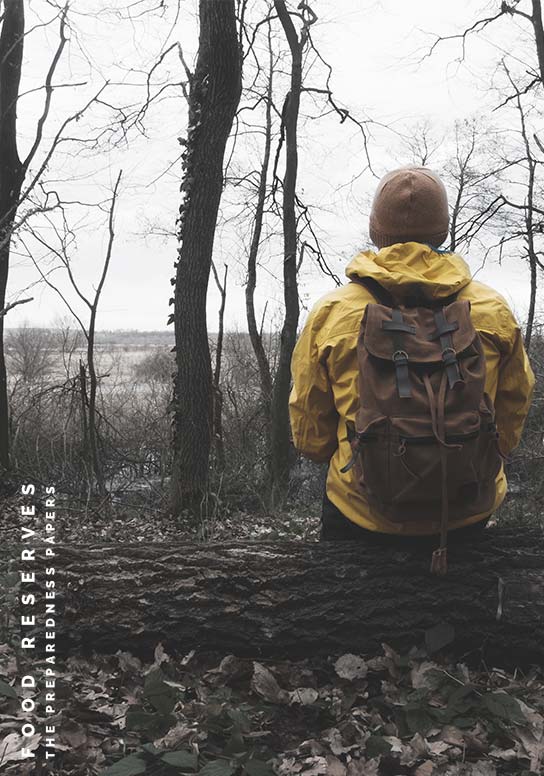THE PREPAREDNESS PAPERS
The information in the "Preparedness Papers" is FREE. Each "paper" has a PRINT button, so you can print and reference them "offline" as needed.


Wild buckwheat (Eriogonum fasciculatum) is one of Southern California's most common chaparral plants. You see it everywhere in the dry chaparral hills, generally appearing as low green mounds with the conspicuous round brown flower heads rising above the mounds. Most hikers to the chaparral hike through and over wild buckwheat regularly without knowing what it is. When they learn that it's called "buckwheat," they immediately think of the cereal grain, and typically the first question is "Can you use it like regular buckwheat?" The answer to this is both yes and no.
Though wild buckwheat bears no resemblance to the farm-grown plant, all of the pre-contact Southern California Indian people used the seed heads of this plant. In general, the seed heads were used in the two major ways you'd use domestic buckwheat: for making a mush and as flour. But, beyond those same basic uses, you'll discover that wild buckwheat is a wholly different creature than the seed found on your grocer's shelf.
The wild buckwheat's begin flowering in the spring. At this stage, they are white. As these small round balls of flowers mature and develop seeds, they become steadily more crumbly. And it is these old, chocolate-brown seed heads that are collected and used for food. The old flower heads can be gathered easily. With just my hands and a plastic bag, I have collected a gallon in ten minutes. Then you rub the heads between your hands, remove the stems and foreign matter, and if you desire an even consistency, you sift it all.
Winnowing was usually done in the old days, so I have never bothered either. Besides, you'd winnow away most of what you collected -- most of what you have is not seed, but it can all be used. Used half and half with wheat or corn flour, these make good pancakes, bread, and other pastry products. Buckwheat used alone with no other flour will be gritty and bland, and the pancakes (or bread, etc.) made this way will be crumbly like corn bread. This is not as appealing a product as you would get by mixing with other flours, but it does give you a good idea of what people ate in the old days. An "old ways" bread from Southern California would likely consist of acorn, wild grass seeds, and wild buckwheat. It would have had sifted wood ash in place of baking soda, some dried and ground wild currants as "sugar," but no oil, and probably no eggs, and no milk. Such bread from the old days would be filling, and would dry well for long term storage. They might take getting used to if you grew up eating white bread.
Additionally, the harvested seed heads could simply be cooked in water like a mush. Then you could eat as-is, or add other condiments that you have, in much the same way that you do with store-bought buckwheat groats or oatmeal for breakfast.
Wild buckwheat is also commonly used by bees to collect pollen, and is thus an important plant for the bee industry (third most important after white sage and black sage).
There are also some minor medicinal properties of the wild buckwheat. A decoction of the leaves is said to help stomach troubles and headaches. The decoction used externally as a wash is claimed to cure poison oak rash. Additionally, some Indian tribes made a tea from the fresh flowers and used that tea as an eye wash. Native to Southern California, it's found on canyon floors, rocky hillsides, dry slopes and ridges. It is very common all throughout the chaparral regions and throughout much of the desert regions. The non-aromatic leaves are linear with the margins rolled under, wooly white below and green above. When not in flower, buckwheat may resemble rosemary. Rosemary, however, has small blue flowers, glossy green leaves, and a very strong perfume-like odor, whereas buckwheat has no strong aroma. The flower clusters form approximately one-inch diameter heads (round, spherical clusters) in groups of two or three. These heads are pinkish-white, and eventually turn reddish-brown when they mature and dry out. The reddish-brown mature flower heads are mostly available in the summer and early fall, though it is generally possible to find at least a few mature seed heads year-round in Southern California.
"DON'T BUG ME - I'M A CITY BOY!" ~ NOT SO WILD INTRODUCTORY PANCAKE RECIPE
½ cup commercial biscuit mix½ cup sifted wild buckwheat headsWater
Blend the biscuit mix and the wild buckwheat, and add enough water to make a pancake consistency. Scoop out onto a hot skillet. Cook each pancake until done, flip it, and then enjoy it with a bit of wild clover honey.
"GIVE ME MORE - I'M A WILD GUY!" ~ MORE ADVENTURESOME WILD BUCKWHEAT BREAD
½ cup leached and ground acorn flour ¼ cup wild buckwheat heads, ground
¼ cup wild grass seeds, ground sifted white wood ash, pinch
¼ cup dried and ground toyon berries, groundwater
Small amounts of other wild seeds like chia, lamb's quarter, etc.
All the ingredients here must be collected in the wild. There are no stores that sell these ingredients (that I know of). Add water and mix until you get thick dough. Form into small balls the size of baseballs or the size of thick pancakes. Bake near the coals of a campfire, or bake at a low temperature (between 150 - 250 °F.) in your oven, until done.
By accepting you will be accessing a service provided by a third-party external to https://foodreserves.com/